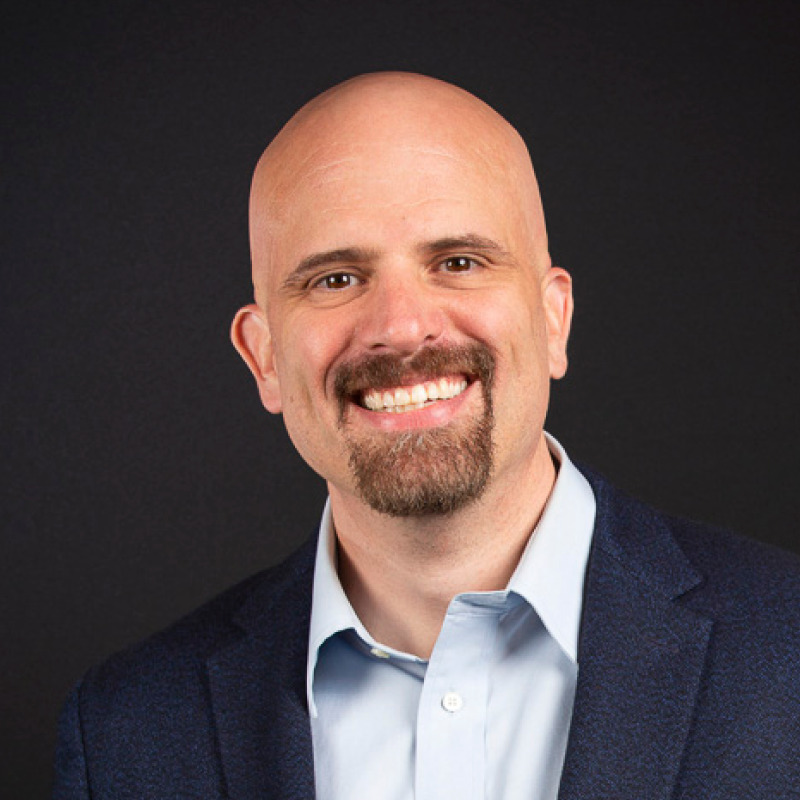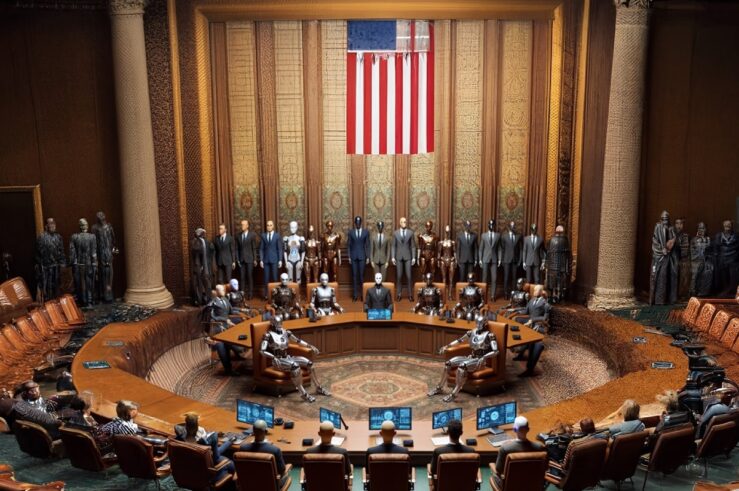Copyright law, ever a sore point in some quarters, has found a new field of battle in the FCC’s recent set-top box proposal. At the request of members of Congress, the Copyright Office recently wrote a rather thorough letter outlining its view of the FCC’s proposal on rightsholders.
In sum, the CR’s letter was an even-handed look at the proposal which concluded:
As a threshold matter, it seems critical that any revised proposal respect the authority of creators to manage the exploitation of their copyrighted works through private licensing arrangements, because regulatory actions that undermine such arrangements would be inconsistent with the rights granted under the Copyright Act.
This fairly uncontroversial statement of basic legal principle was met with cries of alarm. And Stanford’s CIS had a post from Affiliated Scholar Annemarie Bridy that managed to trot out breathless comparisons to inapposite legal theories while simultaneously misconstruing the “fair use” doctrine (as well as how Copyright law works in the video market, for that matter).
Look out! Lochner is coming!
In its letter the Copyright Office warned the FCC that its proposed rules have the potential to disrupt the web of contracts that underlie cable programming, and by extension, risk infringing the rights of copyright holders to commercially exploit their property. This analysis actually tracks what Geoff Manne and I wrote in both our initial comment and our reply comment to the set-top box proposal.
Yet Professor Bridy seems to believe that, notwithstanding the guarantees of both the Constitution and Section 106 of the Copyright Act, the FCC should have the power to abrogate licensing contracts between rightsholders and third parties. She believes that
[t]he Office’s view is essentially that the Copyright Act gives right holders not only the limited range of rights enumerated in Section 106 (i.e., reproduction, preparation of derivative works, distribution, public display, and public performance), but also a much broader and more amorphous right to “manage the commercial exploitation” of copyrighted works in whatever ways they see fit and can accomplish in the marketplace, without any regulatory interference from the government.
What in the world does this even mean? A necessary logical corollary of the Section 106 rights includes the right to exploit works commercially as rightsholders see fit. Otherwise, what could it possibly mean to have the right to control the reproduction or distribution of a work? The truth is that Section 106 sets out a general set of rights that inhere in rightsholders with respect to their protected works, and that commercial exploitation is merely a subset of this total bundle of rights.
The ability to contract with other parties over these rights is also a necessary corollary of the property rights recognized in Section 106. After all, the right to exclude implies by necessity the right to include. Which is exactly what a licensing arrangement is.
But wait, there’s more — she actually managed to pull out the Lochner bogeyman to validate her argument!
The Office’s absolutist logic concerning freedom of contract in the copyright licensing domain is reminiscent of the Supreme Court’s now-infamous reasoning in Lochner v. New York, a 1905 case that invalidated a state law limiting maximum working hours for bakers on the ground that it violated employer-employee freedom of contract. The Court in Lochner deprived the government of the ability to provide basic protections for workers in a labor environment that subjected them to unhealthful and unsafe conditions. As Julie Cohen describes it, “‘Lochner’ has become an epithet used to characterize an outmoded, over-narrow way of thinking about state and federal economic regulation; it goes without saying that hardly anybody takes the doctrine it represents seriously.”
This is quite a leap of logic, as there is precious little in common between the letter from the Copyright Office and the Lochner opinion aside from the fact that both contain the word “contracts” in their pages. Perhaps the most critical problem with Professor Bridy’s analogy is the fact that Lochner was about a legislature interacting with the common law system of contract, whereas the FCC is a body subordinate to Congress, and IP is both constitutionally and statutorily guaranteed. A sovereign may be entitled to interfere with the operation of common law, but an administrative agency does not have the same sort of legal status as a legislature when redefining general legal rights.
The key argument that Professor Bridy offered in support of her belief that the FCC should be free to abrogate contracts at will is that “[r]egulatory limits on private bargains may come in the form of antitrust laws or telecommunications laws or, as here, telecommunications regulations that further antitrust ends.” However, this completely misunderstand U.S. constitutional doctrine.
In particular, as Geoff Manne and I discussed in our set-top box comments to the FCC, using one constitutional clause to end-run another constitutional clause is generally a no-no:
Regardless of whether or how well the rules effect the purpose of Sec. 629, copyright violations cannot be justified by recourse to the Communications Act. Provisions of the Communications Act — enacted under Congress’s Commerce Clause power — cannot be used to create an end run around limitations imposed by the Copyright Act under the Constitution’s Copyright Clause. “Congress cannot evade the limits of one clause of the Constitution by resort to another,” and thus neither can an agency acting within the scope of power delegated to it by Congress. Establishing a regulatory scheme under the Communications Act whereby compliance by regulated parties forces them to violate content creators’ copyrights is plainly unconstitutional.
Congress is of course free to establish the implementation of the Copyright Act as it sees fit. However, unless Congress itself acts to change that implementation, the FCC — or any other party — is not at liberty to interfere with rightsholders’ constitutionally guaranteed rights.
You Have to Break the Law Before You Raise a Defense
Another bone of contention upon which Professor Bridy gnaws is a concern that licensing contracts will abrogate an alleged right to “fair use” by making the defense harder to muster:
One of the more troubling aspects of the Copyright Office’s letter is the length to which it goes to assert that right holders must be free in their licensing agreements with MVPDs to bargain away the public’s fair use rights… Of course, the right of consumers to time-shift video programming for personal use has been enshrined in law since Sony v. Universal in 1984. There’s no uncertainty about that particular fair use question—none at all.
The major problem with this reasoning (notwithstanding the somewhat misleading drafting of Section 107) is that “fair use” is not an affirmative right, it is an affirmative defense. Despite claims that “fair use” is a right, the Supreme Court has noted on at least two separate occasions (1, 2) that Section 107 was “structured… [as]… an affirmative defense requiring a case-by-case analysis.”
Moreover, important as the Sony case is, it does not not establish that “[t]here’s no uncertainty about [time-shifting as a] fair use question—none at all.” What it actually establishes is that, given the facts of that case, time-shifting was a fair use. Not for nothing the Sony Court notes at the outset of its opinion that
An explanation of our rejection of respondents’ unprecedented attempt to impose copyright liability upon the distributors of copying equipment requires a quite detailed recitation of the findings of the District Court.
But more generally, the Sony doctrine stands for the proposition that:
“The limited scope of the copyright holder’s statutory monopoly, like the limited copyright duration required by the Constitution, reflects a balance of competing claims upon the public interest: creative work is to be encouraged and rewarded, but private motivation must ultimately serve the cause of promoting broad public availability of literature, music, and the other arts. The immediate effect of our copyright law is to secure a fair return for an ‘author’s’ creative labor. But the ultimate aim is, by this incentive, to stimulate artistic creativity for the general public good. ‘The sole interest of the United States and the primary object in conferring the monopoly,’ this Court has said, ‘lie in the general benefits derived by the public from the labors of authors.’ Fox Film Corp. v. Doyal, 286 U. S. 123, 286 U. S. 127. See Kendall v. Winsor, 21 How. 322, 62 U. S. 327-328; Grant v. Raymond, 6 Pet. 218, 31 U. S. 241-242. When technological change has rendered its literal terms ambiguous, the Copyright Act must be construed in light of this basic purpose.” Twentieth Century Music Corp. v. Aiken, 422 U. S. 151, 422 U. S. 156 (1975) (footnotes omitted).
In other words, courts must balance competing interests to maximize “the general benefits derived by the public,” subject to technological change and other criteria that might shift that balance in any particular case.
Thus, even as an affirmative defense, nothing is guaranteed. The court will have to walk through a balancing test, and only after that point, and if the accused party’s behavior has not tipped the scales against herself, will the court find the use a “fair use.”
As I noted before,
Not surprisingly, other courts are inclined to follow the Supreme Court. Thus the Eleventh Circuit, the Southern District of New York, and the Central District of California (here and here), to name but a few, all explicitly refer to fair use as an affirmative defense. Oh, and the Ninth Circuit did too, at least until Lenz.
The Lenz case was an interesting one because, despite the above noted Supreme Court precedent treating “fair use” as a defense, it is one of the very few cases that has held “fair use” to be an affirmative right (in that case, the court decided that Section 1201 of the DMCA required consideration of “fair use” as a part of filling out a take-down notice). And in doing so, it too tried to rely on Sony to restructure the nature of “fair use.” But as I have previously written, “[i]t bears noting that the Court in Sony Corp. did not discuss whether or not fair use is an affirmative defense, whereas Acuff Rose (decided 10 years after Sony Corp.) and Harper & Row decisions do.”
Further, even the Eleventh Circuit, which the Ninth relied upon in Lenz, later clarified its position that the above-noted Supreme Court precedent definitely binds lower courts, and that “fair use” is in fact an affirmative defense.
Thus, to say that rightsholders’ licensing contracts somehow impinge a “right” of fair use completely puts the cart before the horse. Remember, as an affirmative defense, “fair use” is an excuse for otherwise infringing behavior, and rightsholders are well within their constitutional and statutory rights to avoid potential infringing uses.
Think about it this way. When you commit a crime you can raise a defense: for instance, an insanity defense. But just because you might be excused for committing a crime if a court finds you were not operating with full faculties, this does not entitle every insane person to go out and commit that crime. The insanity defense can be raised only after a crime is committed, and at that point it will be examined by a judge and jury to determine if applying the defense furthers the overall criminal law scheme.
“Fair use” works in exactly the same manner. And even though Sony described how time- and space-shifting were potentially permissible, it did so only by determining on those facts that the balancing test came out to allow it. So, maybe a particular time-shifting use would be “fair use.” But maybe not. More likely, in this case, even the allegedly well-established “fair use” of time-shifting in the context of today’s digital media, on-demand programing, Netflix and the like may not meet that burden.
And what this means is that a rightsholder does not have an ex ante obligation to consider whether a particular contractual clause might in some fashion or other give rise to a “fair use” defense.
The contrary point of view makes no sense. Because “fair use” is a defense, forcing parties to build “fair use” considerations into their contractual negotiations essentially requires them to build in an allowance for infringement — and one that a court might or might not ever find appropriate in light of the requisite balancing of interests. That just can’t be right.
Instead, I think this article is just a piece of the larger IP-skeptic movement. I suspect that when “fair use” was in its initial stages of development, it was intended as a fairly gentle softening on the limits of intellectual property — something like the “public necessity” doctrine in common law with respect to real property and trespass. However, that is just not how “fair use” advocates see it today. As Geoff Manne has noted, the idea of “permissionless innovation” has wrongly come to mean “no contracts required (or permitted)”:
[Permissionless innovation] is used to justify unlimited expansion of fair use, and is extended by advocates to nearly all of copyright…, which otherwise requires those pernicious licenses (i.e., permission) from others.
But this position is nonsense — intangible property is still property. And at root, property is just a set of legal relations between persons that defines their rights and obligations with respect to some “thing.” It doesn’t matter if you can hold that thing in your hand or not. As property, IP can be subject to transfer and control through voluntarily created contracts.
Even if “fair use” were some sort of as-yet unknown fundamental right, it would still be subject to limitations upon it by other rights and obligations. To claim that “fair use” should somehow trump the right of a property holder to dispose of the property as she wishes is completely at odds with our legal system.




